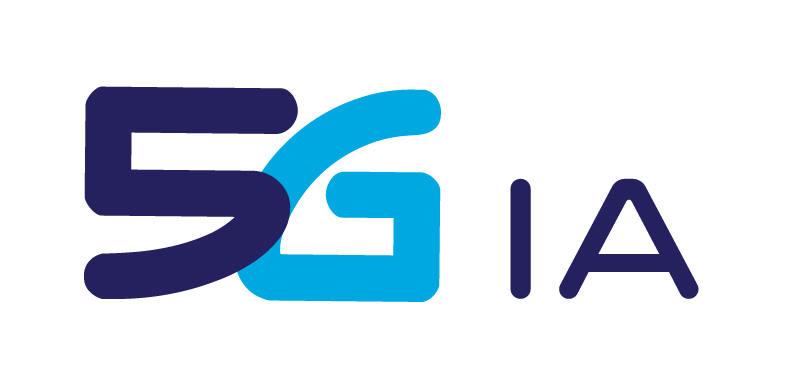

- About us
- Getting Involved
- Plans & Papers
- Events
- European 5G Activities
- Media & News
- Contact
5G-Xcast

Link to project website: 5g-xcast.eu
Social media: Twitter @5Gxcast
Contact: 5gxcast-Contact@5g-ppp.eu
Horizon 2020 – Call: |
H2020-ICT-2016-2 |
Topic: |
ICT-7-2016 |
Type of action: |
R&I |
Duration: |
24 Months |
Start date: |
1/6/2017 |
Project Title: |
5G-Xcast: Broadcast and Multicast Communication Enablers for the Fifth Generation of Wireless Systems |
Objectives
5G-Xcast intended to devise, assess and demonstrate a conceptually novel and forward-looking 5G network architecture for large scale immersive media delivery. The project objectives were to:
- Develop broadcast and multicast point to multipoint (PTM) capabilities for 5G considering M&E, automotive, IoT and PWS use cases, and evaluate 5G spectrum allocation options for 5G Broadcast network deployments.
- Design a dynamically adaptable 5G network architecture with layer independent network interfaces to dynamically and seamlessly switch between unicast, multicast and broadcast modes or use them in parallel and exploit built-in caching capabilities.
- Experimentally demonstrate the 5G key innovations developed in the project for the M&E and PWS verticals.
Achievements
Objective 1: To develop broadcast and multicast Point to Multipoint (PTM) capabilities for 5G.
The limitations of eMBMS in LTE Advanced Pro (Rel-14) have been identified and possible improvements in 5G for both RAN (D3.1) and core network (D4.1) have been proposed. The 5G-Xcast mobile core network has been already designed, built on top of the service-based 5G core network defined in Rel-15. Two main architectures have been proposed, known as PTM services (LTE eMBMS-based) and transparent multicast transport (fully leveraging the 5G core and without any constraint inherit from eMBMS). Based on two main architectures in mobile network, appropriate architectural alternatives for 5G converged networks including fixed and mobile have also been defined with different convergence points for different deployment options. Multiple work flows targeting different verticals and applications such as Media & Entertainment, Public Warning, IoT, C-V2X and Mission Critical Communication, multicast ABR, Multilink have been described. Leveraging on a comprehensive investigation of state-of-the-art PTM technologies including eMBMS 3GPP Rel-14 and ATSC 3.0 as well as 3GPP Rel-15 of 5G NR, the 5G-Xcast RAN has been designed including: a flexible air interface with Mixed Mode and Terrestrial Broadcast Mode for fulfilling diverse 3GPP requirements of different PTM scenarios, a dynamic RAN logical architecture to deploy flexible multicast RAN that can support the same services as the existing multicast and broadcast networks as well as removing limitations concerning the specifications in LTE Rel-14, and effective radio access technology (RAT) protocols with an efficient radio resource management (RRM) which target resolving RAT protocol limitations of the LTE Rel-14 that impose constraints on the RAT technical requirements and fulfilling the NR RRM functional requirements. The mobile core network architecture was extended into a converged system with various access technologies. 5G spectrum options were evaluated for 5G Broadcast network deployments and 5G-Xcast use cases.
Objective 2: To design a dynamically adaptable 5G network architecture with layer independent network interfaces.
A detailed study has been conducted of the various frameworks for content delivery and the work was published in the deliverable D5.1 “Content Delivery Vision”. There is also work ongoing for developing the access-agnostic network architecture, which enables layer and use case independent delivery of PTM content in an efficient manner. The network architecture and management work conducted in WP4 also considers layer/access independent service provisioning using technology enablers such as multilink, and using 5G network functions such as non-3GPP interworking function. The RAN logical architecture been designed in WP3 is able to operate independently from the core network, and adapt to a wide variety of requirements and QoS targets defined according to user demand, traffic flows, network operators and service providers. The usage of IP layer enhancements to enable simple and efficient PTM capabilities in 5G networks is also being evaluated. The capability to dynamically adapt radio spectrum utilization in 5G network architecture was studied and demonstrated.
Objective 3: To experimentally demonstrate the 5G key innovations developed in the project for the M&E and PWS verticals.
The planning task for the testbeds and trials of the project was successfully completed, with the results available in D6.1.
In WP3, the RAN PoC prototypes include system level simulations of selected 5G-Xcast RAN solutions and software-defined-radio-based demonstration of key components of the radio transceiver chain.
In WP4 PoC, public warning messages, including multimedia content, are delivered to mobile devices using two bonded channels whereby one channel is dynamically allocated through multilink.
In WP5, we have created an adaptation layer, that sits between a handset’s broadcast API and a normal unicast, HTTP Adaptive Streaming application. The use of a standard application, that is completely unaware of the use of broadcast for content delivery, is a first significant step in treating broadcast as an internal optimisation capability.
On the basis of the initial plans the project has developed nine demonstrators:
- Hybrid Broadcast Service – Linear TV with add-on content
- Low latency mABR live streaming joint demo with SaT5G
- Spectrum Management Demonstrator
- Hybrid Broadcast Service “with MBMS on Demand (MooD)”
- Hybrid Broadcast Service “with Multi-Link”
- Converged, autonomous MooD in fixed/mobile networks
- Object-based Broadcast across a 5G Core network using Dynamic Adaptive Streaming over IP Multicast
- Multimedia Public Warning
- Reliable Multicast Delivery in 5G Networks
The test-beds available in the project have also been updated to enable testing with state-of-the-art technology. This has permitted conducting trials based on Hybrid Broadcast Services in Munich (with the introduction of MooD and multi-link), Object-Based Broadcasting in Surrey and Public Warning Services including dynamic spectrum management in Turku. The trial for object-based broadcasting (OBB) has been developed in Surrey test-bed, involving an integration of Dynamic Adaptive Streaming over IP Multicast system with 5G Core and 5G NR CPE, which has then been adopted in the demonstrator of OBB at the EuCNC in June 2019. These demonstrators and trials experimentally validate the key innovations developed in the project. A summary of the demonstrators, including their technical description, the corresponding use cases, development plan and events has been provided in D6.2. A similar approach is followed in D6.3 for the trials and test-bed development.
Public demonstrations are documented in the deliverables D6.5, D6.6, D6.7, D6.7, and D6.9, whereas D6.4 provides a final evaluation on the trials and demonstrators.
Project Participants:
| Universitat Politècnica de València (UPV) | Spain |
| Nokia Solutions and Networks Oy | Finland |
| Nokia Solutions and Networks Management International GmbH | Germany |
| British Broadcasting Corporation (BBC) | UK |
| British Telecommunications Public Limited Company (BT) | UK |
| Broadpeak | France |
| BundlesLab Kft | Hungary |
| Expway | France |
| Fairspectrum Oy | Finland |
| Institut für Rundfunktechnik GmbH | Germany |
| LiveU Ltd. | Israel |
| Nomor Research | Germany |
| One2Many | Netherlands |
| Samsung Electronics (UK) Limited | UK |
| Telecom Italia Spa (TIM) | Italy |
| Turku University of Applied Sciences (TUAS) | Finland |
| Union Européenne de Radio Télévision (EBU) | Switzerland |
| University of Surrey | UK |





